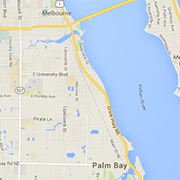Hope on a Leash: One family’s journey to find their service animal

A support duck. That’s right. Someone took a support duck on a flight to help with their fear of flying. Maybe you’ve heard about air passengers having support chickens, pigs, and even a kangaroo. And while amusing and shocking, there is in fact a valid place for these animals in the lives of people facing emotional and mental health challenges.
Last April, my teen daughter’s mental health status became acute, causing daily nonepilectic seizures and 9-1-1 calls from strangers — at school, stores, restaurants, and movie theaters. Our world suddenly shrank to our home and our car, the only places she felt safe.
“Mom, would you ever consider a service dog,” she asked. Brave, given I’d recently announced I would never get another animal.
With the goal of getting my daughter back into school in August, our learning curve was steep. Along with all the medical testing, we’d need a psychiatric service animal, not an emotional support animal (ESA).
ESAs are prescribed by a licensed mental health professional to a person with a psychiatric condition. Even so, ESAs don’t have the public access rights that service dogs do. While able to fly on some airlines, ESAs aren’t allowed in restaurants, malls, or schools. Thanks to the Americans With Disabilities Act (ADA), a service dog is generally allowed to go everywhere their handler goes.
The ADA defines service animals as “dogs or miniature horses that are individually trained to do work or perform tasks for people with disabilities.” Emotional support, although beneficial, is not a task. In our instance, the tasks we needed was to alert my daughter to an oncoming seizure (by scent, up to an hour ahead of time), allowing her to take preventative medication and/or action. Other tasks include protecting her head during seizures and applying deep pressure therapy during recovery.
After a whirlwind and heartwarming Go Fund Me campaign run by my eldest daughter, we landed on Kodiak Service Dogs out of St. Augustine, Fla., with service dog trainer Hanna Vickers.
“I’m a firm believer that animals have a healing power that is not seen but felt,” Hanna said. “Animals can sense things that humans can only dream of sensing... Hope on a leash (or a reign) is an understatement.”
For three months, Hanna task trained with Annie, a black lab from an Oklahoma obedience school. On the first day of my daughter’s school, though, she and Annie were home by noon. Due to an unforeseen nervousness around men and boys, Annie was unable to focus. Although Annie couldn’t provide service work, she has found her forever home — with us as a beloved family pet.
And so, meet Blue, a golden retriever puppy chosen by Hanna who is now in training. Blue shows every promise — temperament, intelligence, strength — of being the service dog that my daughter deserves and needs to return to school next year. Blue is our hope on a leash.
Anne Conroy-Baiter, president of Junior Achievement of the Space Coast, has more than 25 years of experience in nonprofit management, entrepreneurship, marketing, and fundraising. Anne is inspired by the potential for JA to spark community betterment, especially in providing the tools for children to break the bonds of poverty and aspire to lofty goals. Her family recently grew by a few extra pairs of legs.
Read more articles in our Digital Magazine.




